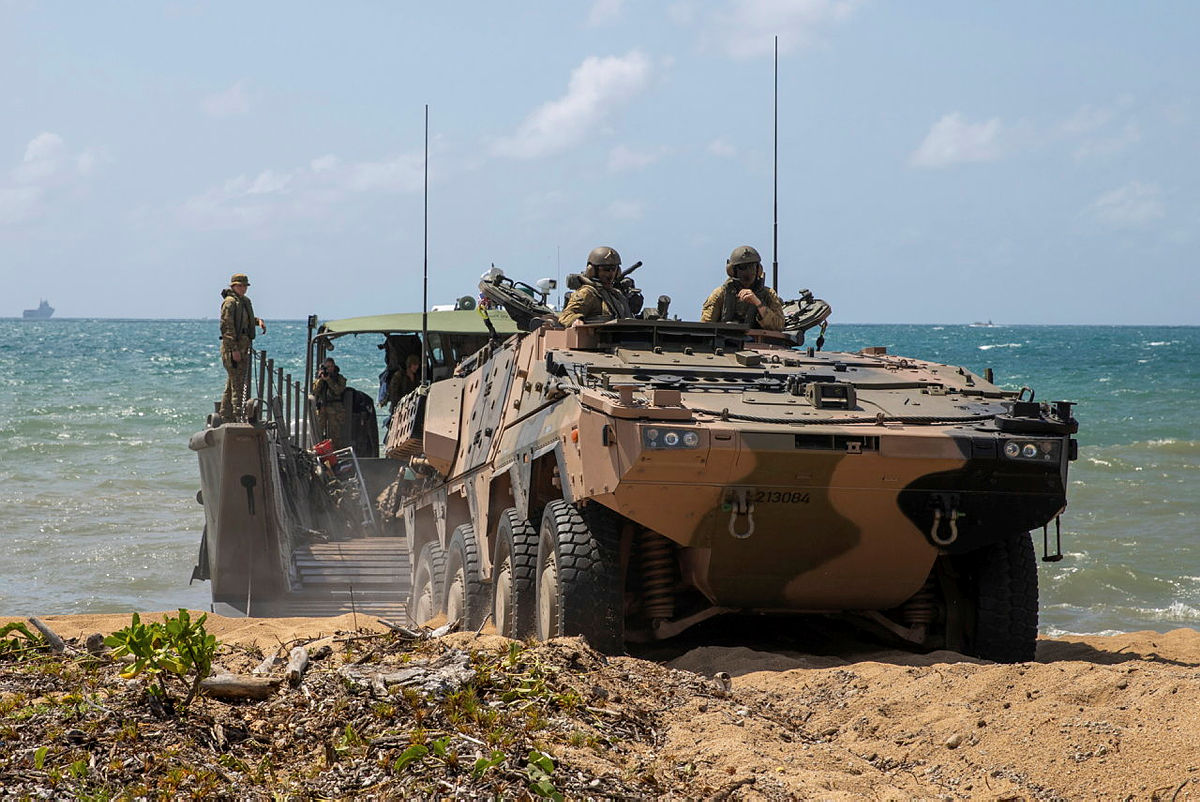
Sea state
Both of the Royal Navy’s Queen Elizabeth–class aircraft carriers have sailed together for the first time, in a symbolic culmination of the UK’s ‘carrier renaissance’. According to naval commander Commodore Steve Moorhouse, the additional carrier puts the UK ‘back in the front rank of maritime powers’, consistent with the its goal to once again become a global naval force. That includes in the Indo-Pacific, to which a strike group led by HMS Queen Elizabeth will soon depart.
Australia’s navy and air force have helped rescue 20 Indonesian fishermen from their sinking fishing vessel about 1,200 kilometres off Western Australia. Royal Australian Air Force and Australian Maritime Safety Authority personnel dropped life rafts to the crew before they were helped onboard frigate HMAS Anzac, where they received medical support. Along with the participating Australian forces, AMSA’s Mark Morrow commended Japanese fishing vessel Fukuseki Maru 15, which diverted to aid in the rescue. The Anzac has since returned the Indonesian crew to their home port in Bali.
Flight path
From 12 May to 15 June, 50 aircraft and more than 500 personnel from the RAAF are taking part in Exercise Arnhem Thunder 21 operating from bases Darwin and Tindal in the Northern Territory. The exercise involves 10 different types of aircraft and marks the first time an F-35A will operate out of RAAF Base Darwin. Exercise Arnhem Thunder will focus on cross-force interoperability and include force integration training and large force employment scenarios.
The US Air Force has provided new details about the development of its Next Generation Air Dominance, or NGAD, program which aims to replace the F-22 Raptor stealth fighter starting sometime in the 2030s and eventually (perhaps sooner than originally planned), the F-35A. The USAF has indicated that the F-22 is becoming increasingly ill-equipped for the kinds of challenging missions likely to be required in the Indo-Pacific theatre in coming years. An NGAD prototype has been flying since September, but further details and a timeline for the aircraft are still under wraps.
Rapid fire
The Australian Army’s new Boxer combat reconnaissance vehicles are participating in their first major training scenario. Diamond Walk is a month-long advanced military exercise and is taking place at Queensland’s Shoalwater Bay Training Area. Crews said the Boxer is ‘unlike anything they have worked with before’ and while its sensors and systems provide more information to work with ‘your mind is stretched between a few different lines of effort’. The Boxer falls under phase 2 of the army’s LAND 400 program, which will see 211 of the eight-wheeled armoured vehicles being acquired at a cost of more than $5 billion.
The US Army has recently held a demonstration event for electric light reconnaissance vehicles known as eLRV. Ten companies brought vehicles for analysis, though only two were 100% powered by electricity. When they’re eventually deployed, eLRVs are expected to enhance capabilities in ‘mobility, automotive performance, lethality and mission load capacity’. Although the US Army collected information from the demonstration ahead of a possible prototyping program, there is no clear timeline for the project due to a lack of direct funding.
Final frontier
China’s Zhurong rover has driven onto the Martian surface a week after its historic landing on the plain known as Utopia Planitia, determined by NASA to be the site of large amounts of underground ice. The Zhurong rover was carried to Mars onboard the Tianwen-1 orbiter and is China’s first interplanetary mission. The six-wheeled rover will conduct tasks using six scientific payloads including ground-penetrating radar, which will be used to collect data on potential water–ice deposits. It will also examine the weather, topography and geology of the Utopia Planitia region.
South Korea is reportedly set to join NASA’s Artemis program after a 21 May summit between President Moon Jae-in and US President Joe Biden held at the White House. The program is a US-led mission to send people back to the moon by 2024, representing the next iteration of human space exploration. So far, nine countries have signed the Artemis Accords including Australia, Canada, the UK and Japan. In a White House press release, both parties announced their commitment to working towards South Korea signing the accords.
Wired watchtower
The Sydney Morning Herald reports that China could have shut down Australia’s 5G network if Huawei had been allowed to build it. Before it was banned in 2018, the Australian government attempted to see if Huawei’s technology could be securely used but the report claims the risk could not be fully mitigated even with the implementation of 300 security measures recommend by the Australian Signals Directorate. The company has denied it would comply with a law passed in 2017 that requires all Chinese companies to cooperate on anything deemed significant to national security by Beijing.
Home Affairs Secretary Mike Pezzullo has warned a cyberattack on critical infrastructure like the electrical grid is a credible, immediate and realistic threat. The government is proposing new laws that would impose heightened cybersecurity responsibilities on operators of infrastructure in critical sectors including energy, health, water and transport. This follows a series of cyberattacks including on federal parliament, Western Australia’s parliament and news organisation Nine.

